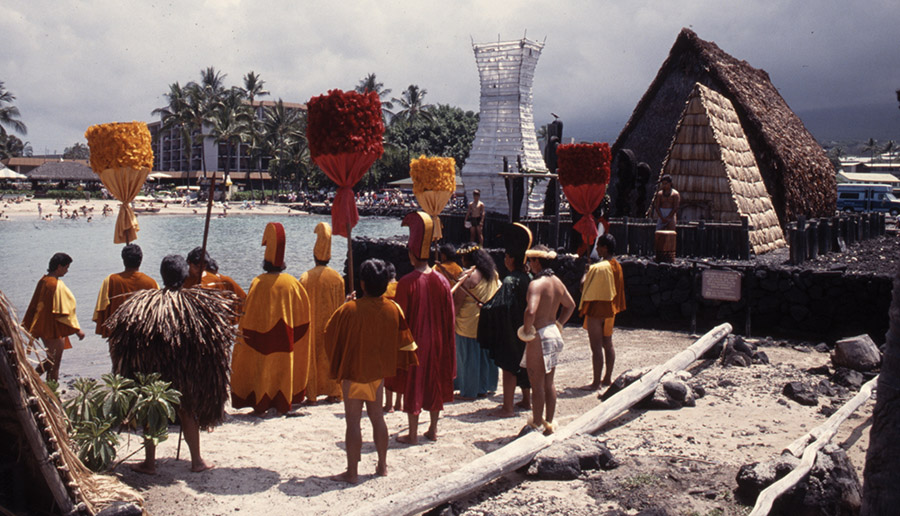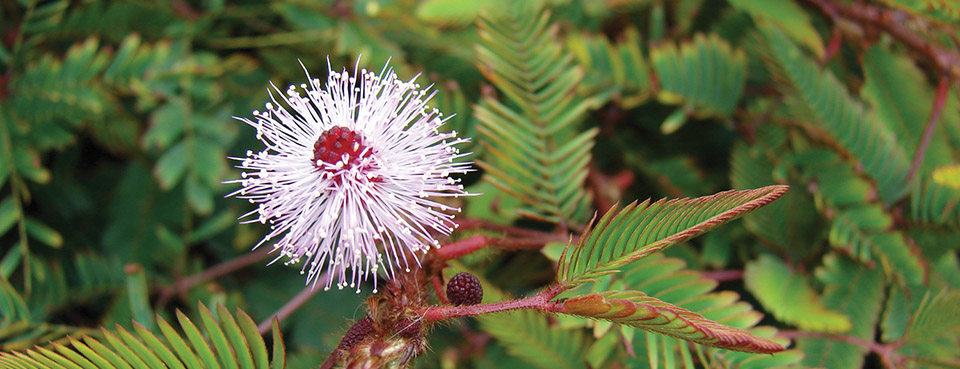
Luana Kawelu: Community Builder and Protector of the Merrie Monarch Legacy
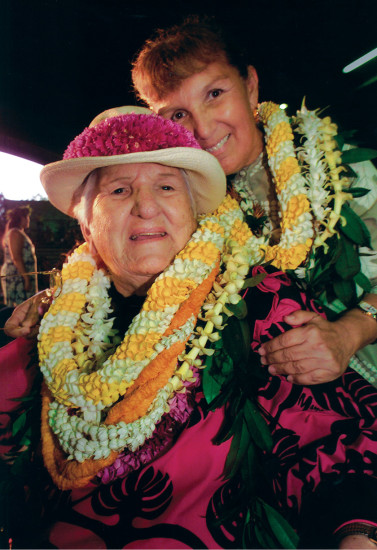
By Paula Thomas
This year, Luana Kawelu will celebrate 44 years of working with Queen Lili‘uokalani Children’s Center (QLCC). Her area is Keaukaha, and her work supports children up to 18 years of age. Luana manages and coordinates programs that range from tutoring and after school sports to community projects like health fairs, GED programs, and summer school, often in partnership with the Keaukaha Community Association, Kamehameha Schools, and Keaukaha Elementary School. Her job is to get children to attend activities, and she works on this full time year-round.
Perhaps the biggest activity is the August Ho‘olaule‘a, a three-day event that brings the entire community together for volleyball, basketball, tug-o-war competitions, lots of local music, food, and other festivities. The QLCC provides all the food for the 1,200 residents, and block captains from the neighborhoods along with committee members and volunteers work together to coordinate all the competitions, arts and crafts, logistics, entertainment, and cleanup.
When Luana speaks about her work, it is clear that she loves it, and she says as much. It’s one her life’s joys to support the Keaukaha community in this way.
“Our Ho‘olaule‘a helps so much to consolidate the community. Some of the families do their family reunions around it . . . and we have a community that cares. The families are getting to know one another, and the kids can run to the neighbors and feel safe.”
Merrie Monarch Festival

Once winter comes, she shifts gears and spends time around the lunch hour at the Merrie Monarch Festival office across from the Edith Kanaka‘ole Tennis Stadium where she takes on her second role as director of the Merrie Monarch Festival, or as her cousin Wally Camp puts it, “the new boss.”
For Luana Kawelu, the Merrie Monarch Festival has become her destiny, put in her protective hands by her mother, Dorothy (Dottie) Mae Elizabeth Soares Thompson, who ran the festival since 1968 as a volunteer, and who passed away in March, 2010.
Luana sits at her piled-high desk in the festival office, with a portrait of her mother hanging on the wall to her left.
And it’s with this awareness of her mother’s legacy that Luana has taken the reins. She laughs when she talks about it, and yet she feels the pressure to stay the course. It’s her job, her duty, to make sure that the much beloved, much appreciated, and signature cultural event in Hilo remains successful and stays in Hilo.
To that end, Luana is loath to change much. She is approached all the time with requests to move the festival to O‘ahu where there are bigger venues, more hotels, and a better infrastructure. In a sense, the festival’s success is also its Achilles heel.
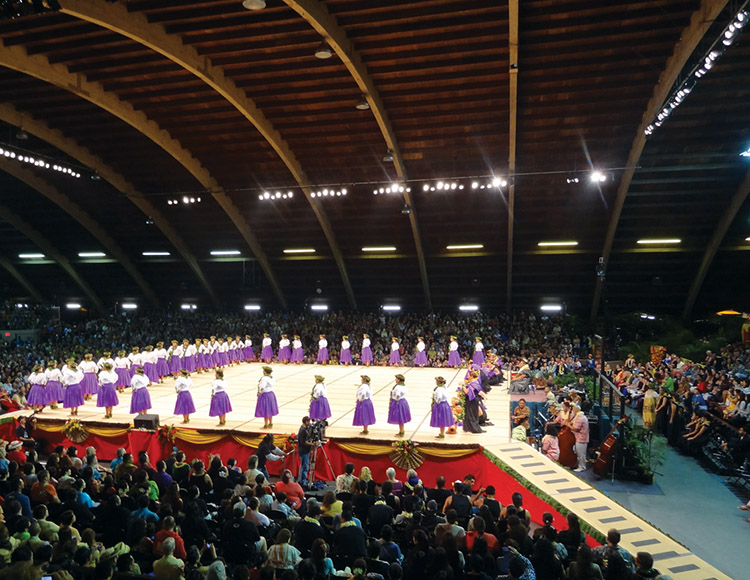
The Merrie Monarch Festival attracts people from all over the world. Tickets can only be ordered by mail, and the envelopes come in from Switzerland, Germany, Austria, France, Taiwan, Tahiti, American Sāmoa, Japan, Korea, Finland, Poland, Saudi Arabia, Siberia, Canada, and all 50 US states.
The global appreciation of the Merrie Monarch Festival is still a source of amazement to the staff.
“This started off as a small-town festival, and people from all over the world want to come,” says Luana. “It’s a wonder how some have heard about it.”
The global draw and increasing number of participating hālau puts a stretch on access to seats. There are just so many at the Edith Kanaka’ole Stadium, the largest venue in Hilo. Each hālau are entitled to 75 tickets, no matter how many dancers they have, which Luana calculates is nearly half the 4,200 tickets available each night. To build a bigger facility here to accommodate more people, there just aren’t enough major events in Hilo to justify the cost, at least not right now. The County, under Mayor Kenoi, did complete renovations of the Tennis Stadium in time for the 50th anniversary festival last spring, but that didn’t expand capacity.
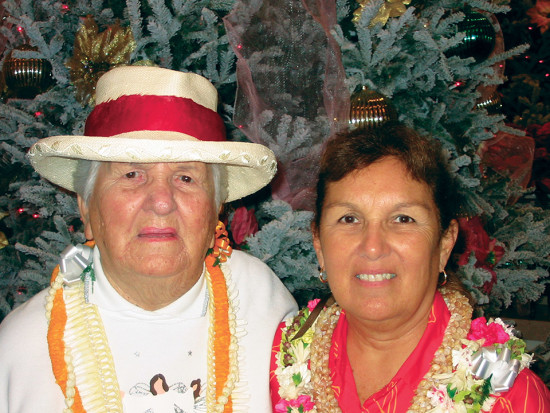
The 51st annual Merrie Monarch Festival, to run from April 20–26 this year, will showcase 28 hālau: 17 wahine (women) and 11 kāne (men). Ticket requests had to be postmarked by December 26, 2013, so late-to-the-gate folks have to find people who already have tickets in order to be able to attend. On the bright side, the extraordinary festival is televised statewide and is streamed live online so that anyone who wants to see it has an opportunity to—as long as they have access to a TV and/or computer.
It was Dottie Thompson who approved television coverage, mostly to enable the kūpuna who could not attend to be able to watch from home. Now, it’s quite possible that hundreds of thousands of people across the globe watch this grand hula event, sometimes referred to as, “the Olympics of hula.”
The first night of hō‘ike performances will be free and open to the public. All other nights require tickets for entry. The colorful Merrie Monarch Parade (also free, on Saturday) is a royal tradition in downtown Hilo not to be missed.
An event of this scale cannot be done alone, and Luana’s daughter, Kathleen Kawelu (an assistant professor of anthropology/archeology at UH Hilo), assists when she can, as do all Luana’s children and extended family members.
Some of the jobs Luana takes on as her kuleana (responsibility) include selecting the seven judges, choosing the design for the t-shirts and tote bags (they are a lovely royal blue and periwinkle this year), directing the ticket sales, and, of course, overseeing the event over its four-day span.
Judge selection is a particularly sensitive process, and the pool of candidates comes from the hālau themselves. Each suggests three people. Combing through the list and coming up with a balanced slate of judges is delicate work says Luana.
“There is only a one-point difference sometimes between the hālau,” she says. “When it’s that close, you need to have a balanced representation from the hālau among the judges. You have to know who is who.”
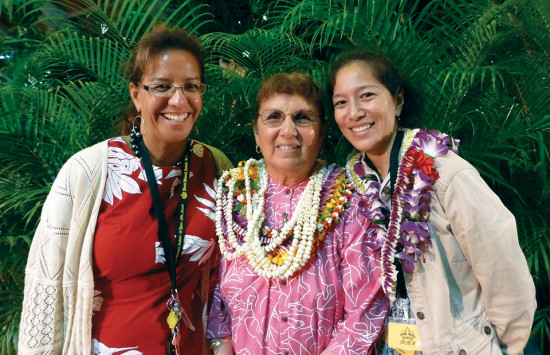
Although hula is the focus of the festival, it wasn’t early on. It was pageantry, coronation of ali‘i, and barbershop quartets in 1964. The first hula was performed in 1971, thanks to Uncle George Na‘ope, the festival co-founder whom had introduced Dottie Thompson to kumu hula around the state. “Aunty Dottie” and Uncle George went around town selling buttons for $1 in those early years to raise money. By 1976, the first kāne performed, and after that, the festival began to take off.
The rules for performing, set out by Aunty ‘Iolani Luahine as well as Lokalia Montgomery and Puanani Alama, haven’t changed since the 1970s.
“Kahiko needs to stay pure,” says Luana. “Whenever you make changes, small or big, you lose the tradition.”
The only change that Luana has made is the elimination of the lei from the t-shirt design.
“Some of the men don’t really like a t-shirt with a lei; other people love it and consider it a signature of the Merrie Monarch Festival. I understand that. But I just didn’t add it in this year,” she says.
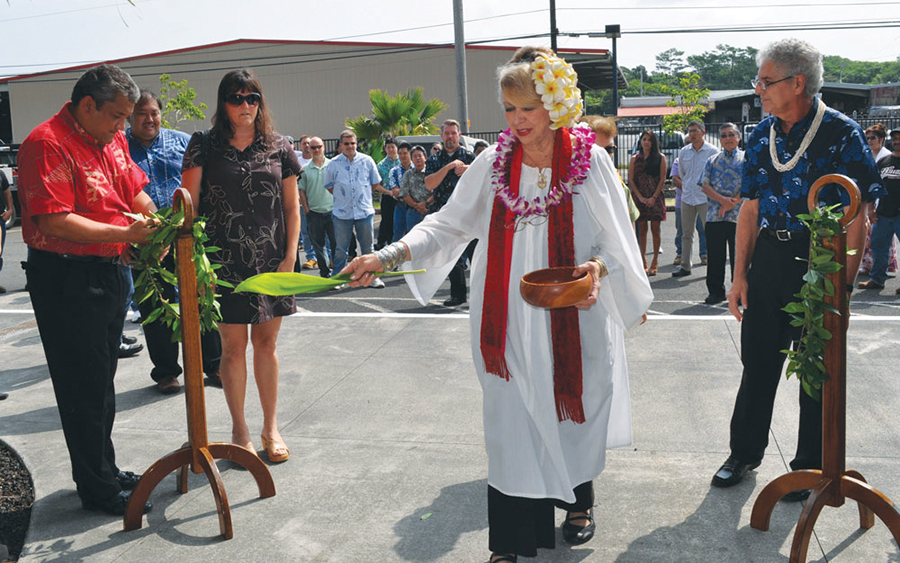
In addition to the hula festival, Luana has a chairperson who organizes the Hawaiian craft fair held at the Afook-Chinen Auditorium. It augments the hula festival by providing screened, authentic Hawaiian crafts within walking distance of the tennis stadium. The fair serves as ongoing support for the revival of the Hawaiian arts, and Luana is pleased and proud, in a modest way, to have played a small part in the revitalization of hula and the Hawaiian arts over the years.
Among the biggest constraint of a festival of this size is the overnight accommodation available, or not, in and around Hilo, for off-island visitors and also for the performing hālau, many of which have upwards of 30 dancers. And anyone who has tried to rent a car or get a cab or a flight during festival week knows the strain on transportation resources.
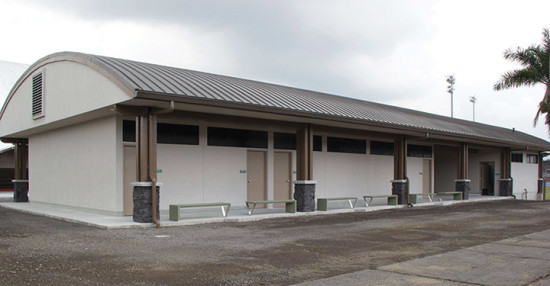
These days, not a week goes by without a mention, a suggestion, or pressure coming from off-island to move the Merrie Monarch Festival to O‘ahu, in part because of these capacity issues. If there is pressure for the festival director, much of it comes from this angle.
Merrie Monarch Festival moving?
“Never on my watch,” asserts Luana. She has been working under her mother for more than 35 years, and directing the festival is not something she feels like she had a choice about.
While it’s an honor and a privilege and a huge job to direct the Merrie Monarch Festival, it is not Luana’s first love. The work that she does with the Keaukaha community the rest of the year has a special place in her heart. She loves the children, she loves helping the community, and she loves seeing growth, development, support, and collaboration among community members.
Luana has noticed over the course of her working life and her involvement with Merrie Monarch that collaboration is becoming a stronger and stronger force. She sees it in her community work and she has seen it in the hālau over time.
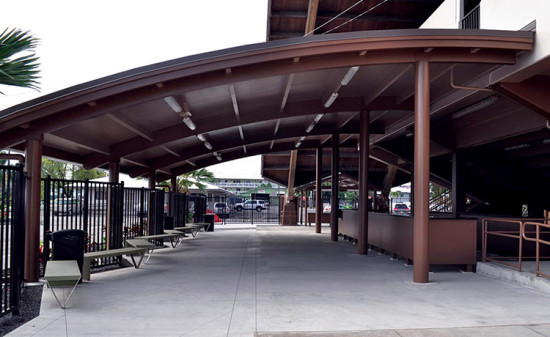
features a permanent counter and seating for those waiting.
“There used to be so much competition among the hālau. There was not much camaraderie and no cooperation between them. Now,” Luana says, “They do so much to help one another. They are very collaborative, and if it wasn’t for them, there wouldn’t be hula.”
“It’s a gift to be able to dance the way they do, and it’s a gift to pass on. They are very careful about what they’ve learned, and they understand that they aren’t just dancing for themselves, but for their kumu and for their culture.”
That is what is perpetuated with the Merrie Monarch Festival: the culture of hula and the arts.
And Hilo is where it was born, and Hilo is where it will stay—as long as Luana Kawelu has anything to say about it. ❖
Photos courtesy Luana Kawelu and Hawai‘i County
Contact Luana Kawelu: MerrieMonarch.com
Contact writer Paula Thomas: paula@delphipacific.com
